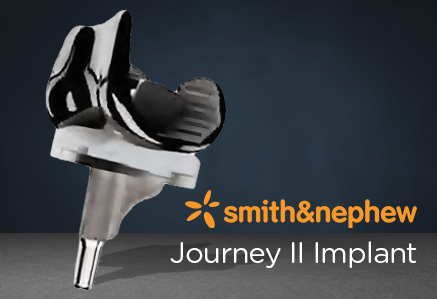Lateral Collateral Ligament
The lateral collateral ligament (LCL) is one of the four knee ligaments. It spans the distance from the end of the femur (thigh bone) to the top of the fibula (thin, outer, lower leg bone) and is on the outside of the knee.
The lateral collateral ligament resists widening of the outside of the joint.
Cause
A lateral collateral ligament injury happens from a direct force from the side of the knee, causing moderate to severe knee pain and ligament injury which often leads to knee surgery.
Symptoms
Symptoms of a tear in the lateral collateral ligament are:
- Knee swelling
- Locking or catching of the knee with movement
- Pain or tenderness along the outside of the knee
- Knee gives way, or feels like it is going to give way, when it is active or stressed in a certain way
Diagnosis
Physical Examination & Patient History
During your first visit, your doctor will talk to you about your symptoms and medical history. During the physical examination, your doctor will check all the structures of your injury, and compare them to your non-injured anatomy. Most injuries can be diagnosed with a thorough physical examination.
Imaging Tests
Imaging Tests Other tests which may help your doctor confirm your diagnosis include:
X-rays. Although they will not show any injury, x-rays can show whether the injury is associated with a broken bone.
Magnetic resonance imaging (MRI) scan. If your injury requires an MRI, this study is utilized to create a better image of soft tissues injuries. However, an MRI may not be required for your particular injury circumstance and will be ordered based on a thorough examination by your Peninsula Bone & Joint Clinic Orthopedic physician.
Treatment Options
Non-Surgical
Ice. Icing your injury is important in the healing process. The proper way to ice an injury is to use crushed ice directly to the injured area for 15 to 20 minutes at a time, with at least 1 hour between icing sessions. Chemical cold products (“blue” ice) should not be placed directly on the skin and are not as effective.
Bracing. Your knee must be protected from the same sideways force that caused the injury. You may need to change your daily activities to avoid risky movements. Your doctor may recommend a brace to protect the injured ligament from stress. To further protect your knee, you may be given crutches to keep you from putting weight on your leg.
Physical therapy. Your doctor may suggest strengthening exercises. Specific exercises will restore function to your knee and strengthen the leg muscles that support it.
Surgical
Some isolated collateral ligament injuries can be successfully treated without surgery. If the collateral ligament is torn in such a way that it cannot heal or is associated with other ligament injuries, your doctor may suggest surgery to repair it.
Conservative Treatment Options
Treatment Highlights






